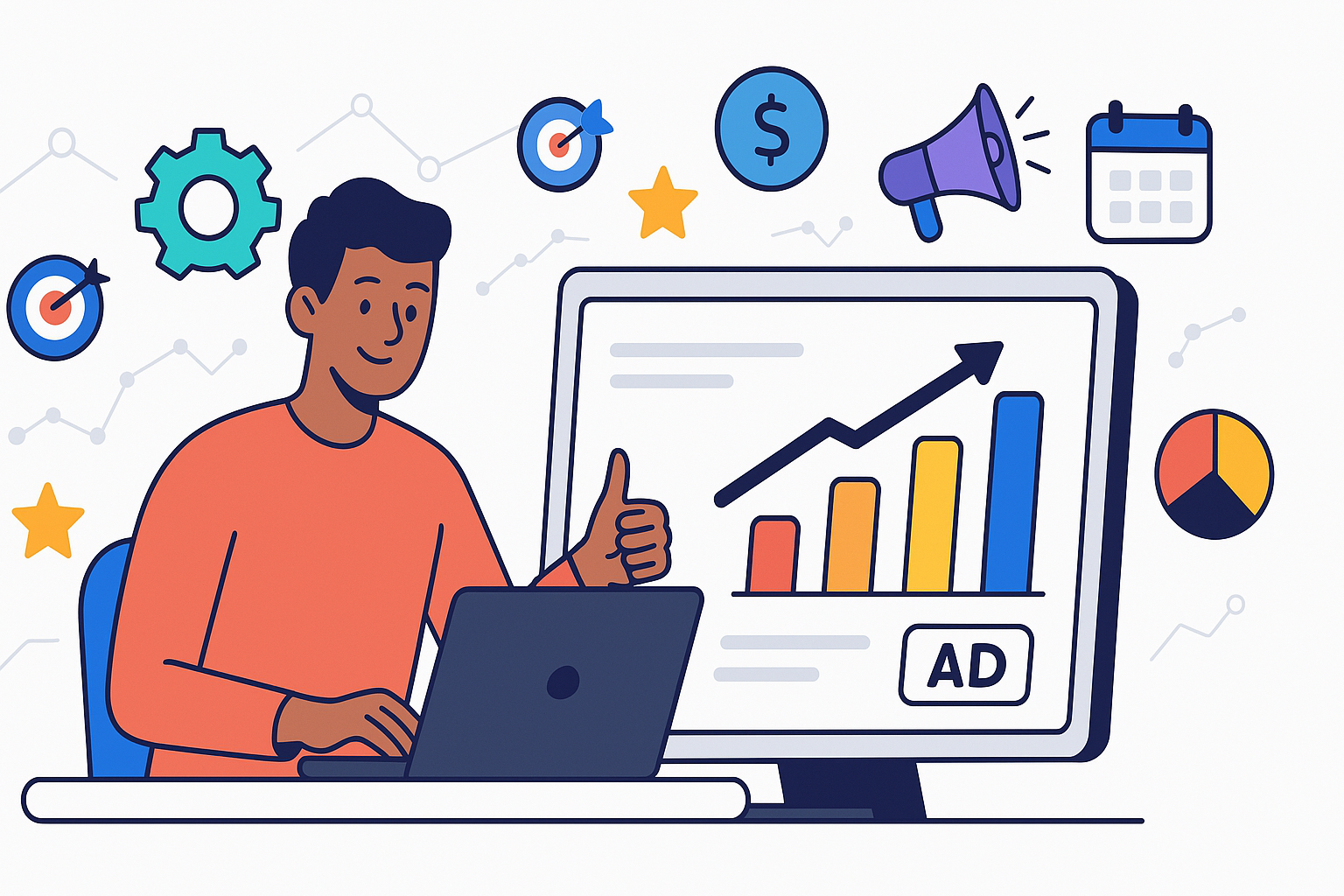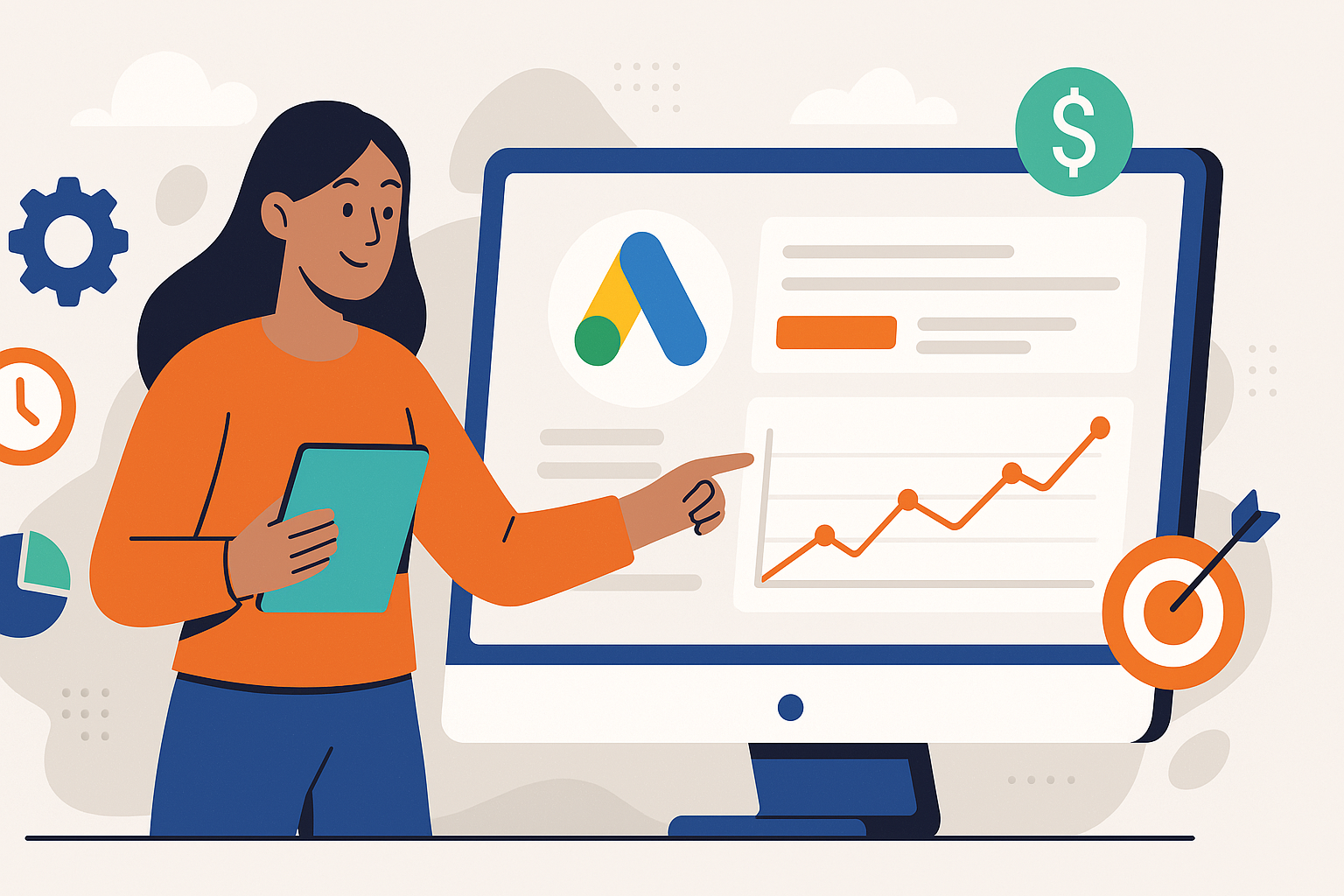What is Bounce Rate and How Can You Improve It?
by Francisco Kraefft on 26 Feb, 2025
Ever wondered why visitors land on your website only to leave moments later without clicking anything? This quick departure is measured by a critical metric: bounce rate. Understanding your bounce rate is fundamental to assessing your website's performance and user experience. It tells you the percentage of visitors who navigate away from your site after viewing only one page. While a high bounce rate can sometimes be alarming, it doesn't always spell disaster. Interpreting this metric correctly is key. Let's dive into what bounce rate truly means, why it's a vital sign for your digital health, and how you can optimize your site to encourage visitors to stick around, explore, and ultimately, convert. Getting a grip on bounce rate empowers you to make data-driven decisions that enhance engagement and drive results.
Understanding Bounce Rate: The Basics Explained
So, what exactly is bounce rate? In simple terms, bounce rate represents the percentage of visitors who enter your website and then leave ("bounce") rather than continuing to view other pages within the same site.
Think of it like someone walking into a store, taking a quick look around the entrance, and immediately walking back out without browsing any aisles or interacting with any products. In the digital world, this translates to a user landing on a specific page (like a blog post, product page, or homepage) and leaving without taking any further action on that page before the session times out or they close the browser/tab.
How is Bounce Rate Calculated?
The calculation is straightforward:
Bounce Rate = (Total Number of Single-Page Sessions / Total Number of Sessions) * 100
- A session starts when a user arrives on your site and ends after a period of inactivity (typically 30 minutes) or when they leave.
- A single-page session (or a bounce) is a session where the user only viewed one page and triggered only one request to the analytics server.
What Constitutes an 'Interaction'?
Platforms like Google Analytics consider a session not bounced if the user interacts with the page in some way. Interactions can include:
- Clicking on a link to another page on your site.
- Filling out a form.
- Clicking a call-to-action (CTA) button.
- Leaving a comment.
- Playing a video hosted on the page.
- Triggering specific events you've set up in your analytics (e.g., downloading a PDF, clicking a social share button).
If a visitor lands on your page, reads the entire article, finds exactly what they need (like a phone number or address), and then leaves without clicking anything else, this still counts as a bounce in standard analytics setups. This highlights why context is crucial when analyzing bounce rate.
Bounce Rate vs. Exit Rate: What's the Difference?
It's easy to confuse bounce rate with exit rate, but they measure different things:
- Bounce Rate: Percentage of sessions that started on a specific page and involved only that one page.
- Exit Rate: Percentage of pageviews on a specific page that were the last in the session. Users might have visited multiple pages before exiting from this particular one.
Every bounce is an exit, but not every exit is a bounce. Understanding this distinction helps you diagnose issues more accurately. A high bounce rate points to problems with the landing page or traffic source relevance, while a high exit rate on a specific page within a user journey (like a checkout page) might indicate a different kind of problem.
Why Should You Care About Your Bounce Rate?
Bounce rate isn't just another number in your analytics report; it's a significant indicator of your website's effectiveness and user satisfaction. Paying close attention to it provides valuable insights into several key areas of your digital presence.
1. Reflection of Content Relevance and Quality
A high bounce rate can signal a mismatch between what users expected to find and what your page actually offers. If users arrive from a search engine results page (SERP) or a social media link expecting certain information, but your content doesn't deliver, they're likely to leave quickly. It can also indicate low-quality content that fails to engage or provide value.
2. Indicator of User Experience (UX)
Your website's design, navigation, and overall usability heavily influence bounce rate. Factors contributing to a poor UX and potentially high bounce rates include:
- Slow loading speed: Visitors are impatient; if your page takes too long to load, they won't wait around.
- Confusing navigation: If users can't easily find what they're looking for or figure out where to go next, they'll likely give up.
- Poor mobile optimization: With a significant portion of traffic coming from mobile devices, a non-responsive or difficult-to-use mobile site is a major deterrent.
- Intrusive elements: Aggressive pop-ups, auto-playing videos, or excessive ads can frustrate users and drive them away.
3. Impact on SEO Performance (Indirectly)
While Google has stated that bounce rate itself isn't a direct ranking factor, it's closely related to factors that are. Search engines prioritize providing users with the best possible results. If users consistently click on your link in search results and then immediately return to the search results page (a behavior known as "pogo-sticking"), it signals to the search engine that your page wasn't a good match for that query. This can negatively impact your rankings over time.
High bounce rates often correlate with low dwell time (the amount of time spent on a page before returning to the SERP), which is considered an important user engagement signal for search engines.
4. Connection to Conversion Rates
Ultimately, most websites have a goal, whether it's generating leads, making sales, or encouraging sign-ups. If visitors are bouncing off your key landing pages without interacting, they aren't moving down the conversion funnel. A high bounce rate on pages designed to convert often means lost opportunities and wasted marketing spend. Reducing bounce rate means keeping potential customers engaged longer, increasing the chances they'll take the desired action.
Monitoring your bounce rate helps you diagnose potential problems with your content, user experience, and traffic sources, allowing you to make targeted improvements that enhance user satisfaction and achieve your business objectives.
Decoding Bounce Rate Benchmarks: What's Normal?
One of the most common questions we hear is: "What is a good bounce rate?" The honest answer? It depends. There's no single magic number, as an 'acceptable' bounce rate varies significantly based on several factors. Judging your bounce rate requires context.
General Benchmarks (Use with Caution):
While context is king, general benchmarks can provide a starting point:
- 26-40%: Excellent. Your pages are likely highly engaging and relevant to your audience.
- 41-55%: Average. This is a common range for many websites.
- 56-70%: Higher than average, but potentially normal depending on the website type or industry. Worth investigating.
- >70%: Problematic (usually). Suggests potential issues with UX, content relevance, page speed, or audience targeting, unless specific page types justify it.
Factors Influencing Bounce Rate Norms:
- Industry: Different industries naturally see different engagement levels. Content-heavy sites (like news or blogs) often have higher bounce rates than e-commerce sites, as visitors might read one article and leave.
- Website/Page Type:
- Blog Posts: Often have higher bounce rates (60-80%+) because users find the answer to a specific question and leave.
- Landing Pages: Can have very high bounce rates if they are designed for a single action (e.g., sign up and leave) or very low if they effectively funnel users deeper.
- E-commerce Product Pages: Ideally lower, as users should be encouraged to browse other products or add items to their cart (aim for 30-55%).
- Service Pages: Bounce rates can vary; ideally, users explore related services or contact pages (aim for 40-60%).
- Contact/Support Pages: High bounce rates (often >70%) are perfectly normal here, as users find the information (phone number, address) and leave.
- Single-Page Websites: Will inherently have near 100% bounce rates unless event tracking is meticulously set up.
- Traffic Source:
- Organic Search: Often has a moderate bounce rate. Users have specific intent but might bounce if the content isn't a perfect match.
- Paid Search: Can vary wildly. Well-targeted campaigns to relevant landing pages should have lower bounce rates.
- Social Media: Often has a very high bounce rate. Users are browsing casually and may click impulsively, spending little time on the page.
- Referral Traffic: Depends on the relevance of the referring site.
- Email Marketing: Typically has a lower bounce rate if the audience is engaged and the content aligns with the email's promise.
- Device: Mobile users might bounce more frequently than desktop users, especially if the mobile experience isn't optimized.
- New vs. Returning Visitors: Returning visitors usually have lower bounce rates as they are already familiar with your site.
How to Interpret Your Bounce Rate:
Instead of fixating on universal benchmarks, focus on:
- Trends Over Time: Is your bounce rate increasing or decreasing?
- Segmentation: Analyze bounce rates for specific pages, traffic sources, devices, and user segments. This reveals where the real issues (or successes) lie.
- Comparison to Goals: How does the bounce rate on key conversion pages align with your objectives?
Use bounce rate as a diagnostic tool. Investigate pages with unexpectedly high bounce rates, considering the factors above, to understand the why behind the number.
Identifying the Culprits: Why Visitors Leave Your Site Quickly
A high bounce rate is a symptom, not the disease itself. To effectively address it, you need to diagnose the underlying causes. Why are visitors landing on your page and deciding almost immediately that it's not for them? Here are some of the most common reasons:
-
Slow Page Load Speed:
- The Issue: In today's fast-paced digital environment, patience is thin. If your page takes more than a few seconds to load, many users will simply hit the back button before your content even appears.
- Check: Use tools like Google PageSpeed Insights to test your load times on both desktop and mobile.
-
Poor Mobile Experience:
- The Issue: A significant chunk of web traffic comes from mobile devices. If your site isn't responsive, requires pinching and zooming, has tiny clickable elements, or loads slowly on mobile, you're providing a frustrating experience.
- Check: Test your site thoroughly on various smartphones and tablets. Use Google's Mobile-Friendly Test.
-
Subpar User Experience (UX) / User Interface (UI):
- The Issue: This covers a range of problems: confusing navigation, cluttered layout, hard-to-read fonts, disruptive pop-ups or ads, auto-playing media, or simply an outdated or unprofessional design.
- Check: Ask for user feedback, use heatmaps or session recording tools (like Hotjar or Clarity) to see how users interact with your page.
-
Misleading Title Tags and Meta Descriptions:
- The Issue: Your title tag and meta description set expectations in search results or social shares. If they promise something your page doesn't deliver, users will feel misled and bounce immediately upon realizing the mismatch.
- Check: Ensure your titles and descriptions accurately reflect the page content and target user intent.
-
Low-Quality, Irrelevant, or Shallow Content:
- The Issue: Does your content fully answer the user's query? Is it well-written, engaging, and trustworthy? If the content is thin, poorly structured, full of errors, or doesn't match the user's search intent, they have no reason to stay.
- Check: Review your content critically. Is it comprehensive, valuable, and aligned with the keywords bringing users to the page?
-
Technical Errors:
- The Issue: Landing on a 404 error page (Page Not Found) or encountering broken links or malfunctioning scripts guarantees a bounce.
- Check: Regularly crawl your site for broken links and monitor technical errors through Google Search Console.
-
Page Serves a Single, Quick Purpose:
- The Nuance: Sometimes, a high bounce rate is expected and acceptable. If a user lands on your contact page, finds your phone number, and leaves, they achieved their goal. The same applies to simple landing pages confirming a subscription or specific blog posts answering a very narrow question.
- Check: Evaluate the purpose of the page. Does it require further interaction, or does it satisfy user intent quickly?
-
Asking for Too Much Too Soon:
- The Issue: Hitting a new visitor with an immediate, demanding pop-up asking for personal information or a purchase before they've had a chance to engage with your content can be off-putting.
By systematically evaluating these potential culprits, especially on pages with high bounce rates, you can pinpoint the specific issues driving users away and begin formulating effective solutions.
Actionable Tactics to Lower Your Bounce Rate and Boost Engagement
Understanding why visitors bounce is the first step; the next is taking concrete action to encourage them to stay longer and explore more of your site. Lowering your bounce rate often translates directly to improved user experience and better overall website performance. Here are effective strategies we implement for our clients:
-
Optimize Page Load Speed:
- Action: Compress images, leverage browser caching, minimize code (HTML, CSS, JavaScript), reduce server response time, and consider a Content Delivery Network (CDN). Speed is paramount.
-
Enhance Content Readability and Quality:
- Action: Break up long text blocks with headings, subheadings, bullet points, and numbered lists. Use clear, concise language. Incorporate high-quality images, infographics, and videos to illustrate points and keep users engaged. Ensure your content comprehensively addresses the user's intent.
-
Improve Website Navigation and Structure (UX/UI):
- Action: Ensure your navigation menu is intuitive and logical. Make search functionality prominent and effective. Use a clean, uncluttered design with clear visual hierarchy. Ensure calls-to-action (CTAs) are visible and make sense in the user journey.
-
Ensure Mobile-Friendliness:
- Action: Implement responsive design so your site adapts seamlessly to all screen sizes. Test buttons and links to ensure they are easily tappable. Optimize images and scripts for mobile performance.
-
Craft Compelling Title Tags and Meta Descriptions:
- Action: Write clear, concise, and accurate titles and descriptions that truly reflect the page's content and create the right expectations for users clicking through from SERPs or social media.
-
Strengthen Internal Linking:
- Action: Link relevant keywords and phrases within your content to other related pages or blog posts on your site. This encourages users to continue exploring, provides them with more value, and distributes page authority.
-
Use Clear and Relevant Calls-to-Action (CTAs):
- Action: Guide your visitors on what to do next. Use action-oriented language (e.g., "Learn More," "Download Guide," "Shop Now") on buttons or links that stand out. Ensure the CTA is relevant to the page content.
-
Embed Engaging Media:
- Action: Adding relevant videos (e.g., tutorials, product demos, explainers) or interactive elements (quizzes, calculators) can significantly increase time on page and reduce bounce rate.
-
Minimize Intrusive Elements:
- Action: Be mindful of pop-ups, auto-playing videos, and excessive advertising. If using pop-ups, consider exit-intent triggers rather than immediate ones. Ensure ads don't overshadow your main content.
-
Match Content to User Intent:
- Action: Use tools like Google Analytics and Google Search Console to understand the keywords driving traffic to a page. Ensure your content directly addresses the questions or needs implied by those search terms.
Implementing these tactics requires ongoing effort and analysis. Monitor your bounce rate after making changes, segment your data to understand the impact on different user groups, and continue refining your approach based on the results. Remember, the goal is to create a valuable and seamless experience for your visitors.
Conclusion
Bounce rate is more than just a percentage; it's a window into how users perceive your website's relevance and usability upon first impression. While it shouldn't be viewed in isolation, understanding what drives your bounce rate – whether high or low – is crucial for optimizing your digital strategy. By focusing on delivering relevant, high-quality content, ensuring a fast and seamless user experience across all devices, and guiding visitors effectively, you can encourage deeper engagement. Don't fixate on achieving an arbitrary number; focus on creating value for your audience. Reducing unnecessary bounces is a natural outcome of a user-centric approach.
Ready to turn bounces into engagement and conversions? Let iVirtual's data-driven experts analyze your site and implement strategies that deliver measurable results. Contact us today for a personalized consultation!


